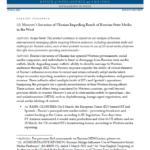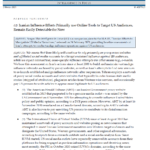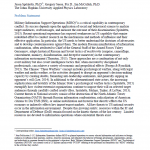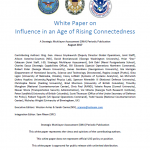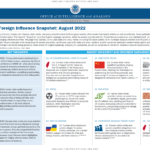
We judge that narratives driven by Chinese, Iranian, and Russian state media, and proxy websites linked to these governments, often involve fact-based articles as well as editorials; these publications may include misinformation, disinformation, or factual but misrepresented information. This monthly “Snapshot” compiles English-language narratives, which we assess are intended for US and Western audiences, and highlights both consistent trends and emergent messaging, which we assess to reveal foreign actors’ changing influence priorities. We judge that, typically, China uses state and proxy media—including US-based outlets—to try to shape diaspora conduct and US public and leadership views; Iran state media manipulates emerging stories and emphasizes Tehran’s strength while denigrating US society and policy; and Russia uses both state and proxy media to amplify narratives seeking to weaken Washington’s global position relative to Moscow’s.

